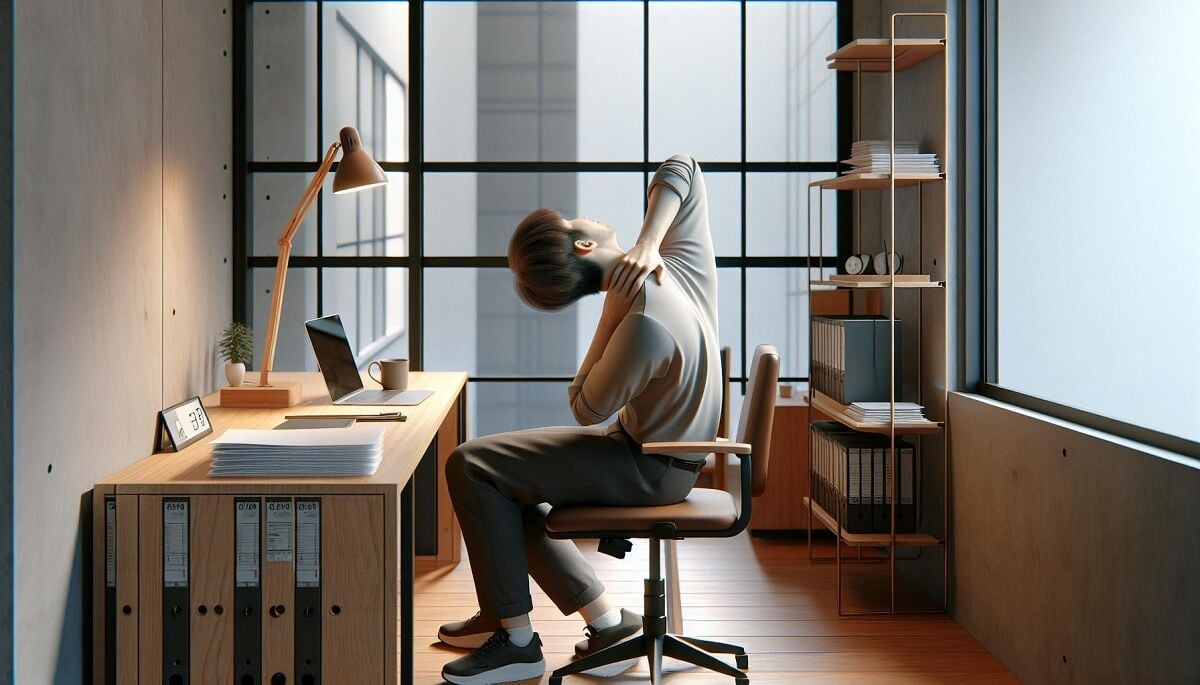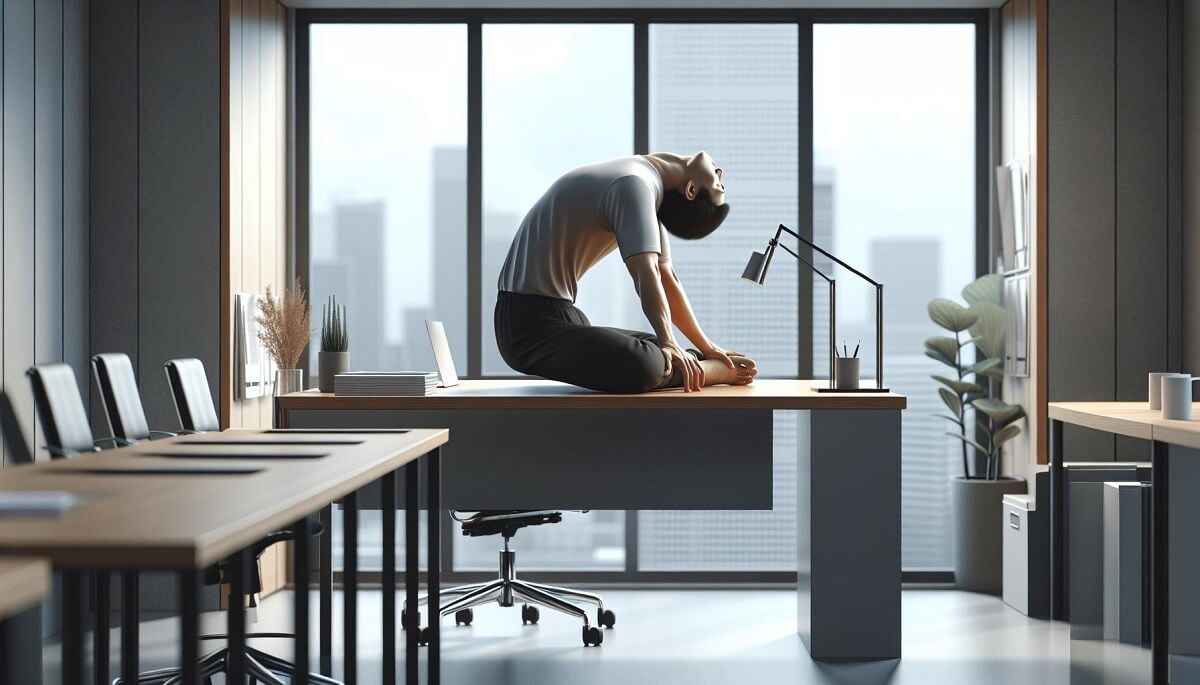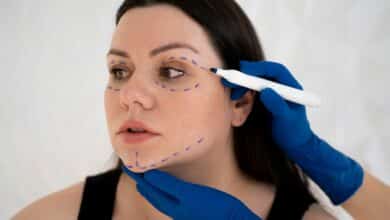Simple exercises & desk stretches to boost your wellbeing

Have you ever encountered discomforting neck pain following an extended duration of static exercises at your desk? Be assured, that this is an experience shared by many. A considerable percentage of individuals carry the burden of tension in their neck and upper back regions, particularly when required to work extensively on a computer. The surprisingly heavy weight of the human head, averaging at about 11 pounds, tends to put stress on these muscle groups.
Nonetheless, fret not, as there is a solution within reach and it does not necessitate leaving one’s workspace. Uncomplicated, though effective, stretching exercises can provide significant relief in addition to preventing further development of tension. Envision experiencing an entire workday devoid of persistent headaches and rigid shoulders. This article aims to walk you through a set of straightforward stretching routines and activities that can be performed comfortably at your desk.
Hence, prepare to bid farewell to accumulated tension and embrace an increasingly relaxed and productive work day. Let us now delve into these swift and impactful techniques to maintain the well-being of your neck and upper back as you continue to work.
Essential desk stretches for full-body flexibility
Combating the strain of desk work requires full-body flexibility from your neck down to your toes. Let’s explore simple exercises and stretches that can diminish physical discomfort during long work hours.
Neck and shoulder stretches
Posture issues often start in the neck and shoulders. Dropping your head forward while working on a computer can stress your neck muscles. This tension can cause headaches and upper back discomfort. The solution lies in stretches designed to relieve this strain. Try sitting upright with your back straight and shoulders back. Reach down and hold onto the side of your chair with your right hand. Gently pull while tilting your head to the left, feeling a stretch down the right side of the neck and shoulder. Hold this position for 10 to 30 seconds, repeat on the other side, and aim for 5 to 10 repetitions on each side.
Arm and wrist stretches
The experience of stiffness in wrists and arms may arise from constant typing or extended periods of maintaining your wrists on a keyboard. This issue can be addressed by incorporating fundamental wrist and arm stretches into your routine. As an example, position your right arm out ahead of you with your palm facing upward. Proceed to cautiously utilise your left hand to pull the fingers in your direction, resulting in a stretch within the forearm. Maintain this position for a time interval of 10 to 30 seconds and reproduce this process with the opposing hand. Implement this specific stretch five to 10 times per side to maximize its efficacy.
Torso and back stretches
The first place added weight appears is usually around the stomach. This explains the need for abdominal stretches which also work on your oblique muscles. Begin by sitting on the edge of your chair, maintaining a straight back. Extend your right leg forward while keeping your left foot flat on the floor. Fold forward, reaching for your right toes. Maintain this stretch for 15 to 30 seconds and then alternate on the other side. Regular repetition can help in managing tension around your stomach and lower back. Pair up such stretches with correct ergonomics at your workstation for a full relief package.
Employing these simple exercises and stretches can aid in maintaining a healthier lifestyle without having to leave your desk. Commence on this journey towards full-body flexibility to experience improved physical comfort during your workday.
Simple exercises to boost circulation

As we persist with our emphasis on preserving health in the face of extended desk work periods, we now delve into a selection of uncomplicated exercises that serve to keep your physique in motion and also promote efficient blood circulation. These exercises can conveniently be executed within the parameters of your professional setting or residence, thereby contributing to your comprehensive fitness agenda even whilst restricted to your workstation.
Leg lifts and extensions
Leg lifts and extensions target the lower body, particularly the leg muscles, contributing to better circulation. Here’s how you can perform these exercises in your seated position:
-
Start by raising one foot a few inches off the floor.
-
Keeping your knee bent at a 90-degree angle, hold the position for at least 10 seconds.
-
Repeat this exercise with your other leg.
Still seated, you can then transition to leg extensions:
-
Extend one leg until it’s level with your hips.
-
Hold this position for as long as you can, then relax.
-
Do this exercise 10 times for each leg for optimal results.
Chair squats and lunges
Your office chair is not just a piece of furniture; it can serve as an excellent prop for lunges and squats:
Chair squats
-
Stand up from your chair and then sit back down without using your hands for support.
-
Repeat these chair squats a few times.
Chair lunges
-
Stand behind your chair, using it for support.
-
Extend one foot backwards, bending both knees at a 90-degree angle in a lunge position.
-
Repeat this for both legs.
Seated cardio movements
To increase your heartbeat and stimulate circulation, seated cardio movements can be performed right at your desk.
-
Rotate your ankles, both clockwise and anticlockwise.
-
Perform seated marching by raising your knees alternately.
-
Try seated jumping jacks without the jump but with the arm movement.
Easy yoga poses for desk workers

Desk work often demands long hours of sitting, sometimes leading to discomfort in various parts of the body. Yoga can be a great solution for desk workers as it offers simple and effective exercises to help alleviate this discomfort.
Seated cat-cow stretch
One exercise you can do right at your desk is the Seated Cat-Cow Stretch. It’s excellent for relieving tension in the spine – a common issue for those who sit for extended periods.
-
Begin by sitting at the edge of your chair, feet flat on the floor.
-
Place your hands on your knees.
-
On an inhale, arch your back and look towards the ceiling (cow pose).
-
On an exhale, round your spine and drop your chin to your chest (cat pose).
-
Repeat this sequence 5-10 times, depending on your comfort level.
You’re advised to include this stretch in your routine, especially during long work sessions, but not if you recently had a back injury.
Chair pigeon pose
Another beneficial exercise is the Chair Pigeon Pose, which stretches the hip flexors and lower back – regions that can become stiff due to prolonged sitting.
-
Start by sitting on the edge of your chair, keeping your back straight.
-
Lift your right leg and place the right ankle over the left knee.
-
Gently lean forward, keeping your back straight, until you feel a stretch in your right hip and buttock.
-
Hold the pose for 15-30 seconds.
-
Repeat this process with your left leg.
Remember, don’t force the stretch, and ensure your knees feel comfortable throughout.
Desk downward dog
Initiating Desk Downward Dog, an adapted yoga pose, stretches the entire back and promotes overall body flexibility.
-
Stand up from your chair and face the desk.
-
Walk a few steps back, and keep your feet hip-width apart.
-
Lean forward and place your hands on the desk, keeping your arms stretched.
-
Push your hips back and let your chest move towards the floor, feeling a stretch in your back.
-
Maintain this pose for about 20-30 seconds.
Be cautious and avoid this exercise if you have severe wrist or shoulder injuries.
How about adding these easy-peasy exercises and stretches to your daily grind? They can surely give your physical well-being a nice boost while you’re working away at your desk. Plus, they’re great at making you more flexible and keeping those pesky aches at bay when you’re sat for a while. Remember, your body’s your best buddy, so listen to it and only do what feels good. Here’s to a happier, healthier workday.
Tips for incorporating movement into your routine

Maintaining a sedentary profession, largely predicated on being situated before a desk, often induces undue tension, primarily within the cervical and dorsal areas. However, the incorporation of basic physical movements and stretching can substantially alleviate such distress, consequently advancing your overall health and wellness.
1. Engage in simple slot-in exercises
Discover bouts of exercises that fit within your busy schedule, compact enough to perform at your desk. Don’t hesitate to incorporate 5 to 10-minute workouts within your working day. Such regular movement stimulates blood flow, supplying an energy boost to thrive during the infamous mid-afternoon slump.
2. Maximise chair exercises
Learn to leverage your chair as a tool for exercises, particularly stretching.
A neck stretch is a relief provider, countering the stress caused by the weight of your head, up to 11 pounds, upon your neck. Here’s how you engage it:
-
Sit upright, shoulders back.
-
Grasp the chair side with your right hand.
-
Gently pull while tilting your head to the left, inducing a stretch down the right neck-side and shoulder.
-
Maintain this position for 10 to 30 seconds.
-
Repeat the process on the other side.
-
Endeavour to cycle this exercise at least 5 to 10 times.
3. Leverage minimalist equipment
You don’t need a gym full of equipment for a good workout. Favour uncomplicated, gear-free exercises to prevent work disruptions.
A common exercise is a simple stretch which requires no equipment:
-
Rest your right hand on top of your head and your left hand behind your back.
-
Gently guide your head towards the right shoulder, ensuring your right ear is lowered.
-
Sustain this posture for a comfortable duration before switching sides.
Smartphones have significantly impacted young people’s social lives by enhancing connectivity and communication but also contributing to reduced face-to-face interactions. While they enable constant connection with peers, they can lead to social isolation and decreased interpersonal skills, making it crucial to find a balance in their use.

































